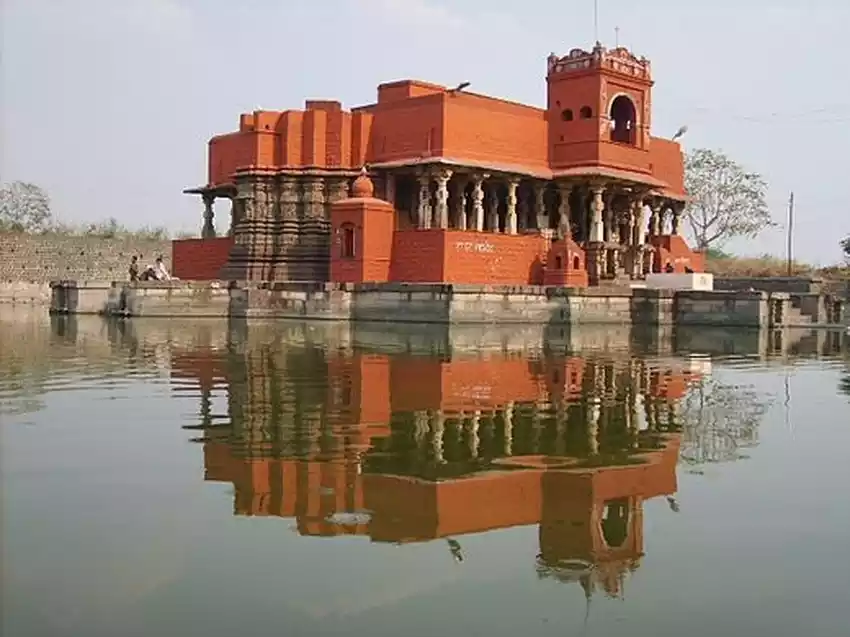Exploring the Rich Tapestry of Beed District: A Comprehensive Guide
Introduction
Beed District, located in the Marathwada region of Maharashtra, India, is a land of historical significance, cultural richness, and natural beauty. This article delves into the intricate details of Beed, encompassing its demography, culture, geography, topography, cuisines, history, notable poets and authors, and administration.
Demography
Beed District, with its diverse population, is a microcosm of India's varied cultural landscape. According to the latest census, Beed has a population of over 2.5 million people. The district is predominantly rural, with a significant portion of the population engaged in agriculture. The demographic composition includes a mix of Marathas, Dhangars, Dalits, Muslims, and other communities, each contributing to the district's vibrant social fabric.
Population Distribution
- Urban Population: Approximately 20%
- Rural Population: Approximately 80%
- Literacy Rate: Around 76%
- Gender Ratio: 929 females per 1000 males
Culture
Beed District is a melting pot of traditions and customs. The cultural ethos is deeply rooted in its historical and religious heritage. Festivals like Ganesh Chaturthi, Diwali, Eid, and Makar Sankranti are celebrated with great fervor. Folk dances such as Lavani and Dhangari Gaja, accompanied by traditional musical instruments, are integral to Beed’s cultural identity.
Traditional Arts and Crafts
- Handloom Weaving: Known for producing intricate sarees and fabrics.
- Pottery: Traditional clay pots and utensils are a specialty.
- Wood Carving: Artisans create beautiful decorative items and household goods.
Geography and Topography
Beed District is characterized by a varied topography that includes plains, hills, and river valleys. The district lies between the coordinates 18.9911° N latitude and 75.7602° E longitude.
Major Geographic Features
- Godavari River Basin: The northern part of Beed is part of the Godavari river basin.
- Balaghat Range: The southern part of the district is flanked by the Balaghat range, which provides a rugged landscape.
- Forests: The district has several forested areas, which are home to diverse flora and fauna.
Diagram: Topographical Map of Beed District
Cuisines
The cuisine of Beed is a delightful amalgamation of Maharashtrian flavors with unique local twists. The food here is known for its simplicity and use of locally sourced ingredients.
Popular Dishes
- Bajra Bhakri: A traditional flatbread made from millet flour.
- Zunka Bhakar: A spicy gram flour-based dish served with roti.
- Puran Poli: A sweet flatbread filled with a mixture of jaggery and gram flour.
- Misal Pav: A spicy curry made from sprouted lentils, served with bread.
- Kombdi Vade: A traditional chicken curry served with vade (fried bread).
History
Beed District has a rich historical legacy that dates back to ancient times. The district was part of the Chalukya and Rashtrakuta empires in the medieval period. During the Maratha rule, Beed gained prominence due to its strategic location.
Historical Milestones
- Chalukya Dynasty: Beed was an important center during the Chalukya rule (6th to 12th century).
- Rashtrakuta Empire: The district saw significant development under the Rashtrakutas.
- Maratha Period: Beed was a key administrative region under the Marathas.
- British Colonial Era: Beed played a role in the freedom struggle with several local uprisings against British rule.
Notable Poets and Authors
Beed has been home to several literary figures who have contributed significantly to Marathi literature.
Prominent Figures
- Narayan Surve: A renowned Marathi poet known for his progressive writing and portrayal of working-class life.
- Shahir Sable: A folk artist and poet, famous for his Lavani and Powada performances.
- Arun Mhatre: A contemporary poet whose works reflect the socio-political landscape of Maharashtra.
Administration
Beed District is administratively divided into 11 talukas, each governed by a Tehsildar. The district administration is headed by the District Collector, who oversees the implementation of government policies and developmental programs.
Administrative Structure
- District Collector: The chief administrative officer responsible for the overall governance of the district.
- Tehsildar: Heads the administration at the taluka level.
- Gram Panchayats: Village-level administrative bodies that govern rural areas.
Government Initiatives
- Agricultural Development Programs: Initiatives aimed at improving agricultural productivity and farmers' welfare.
- Healthcare Services: Various schemes to enhance healthcare infrastructure and services in rural and urban areas.
- Educational Programs: Efforts to increase literacy rates and improve educational facilities.
Conclusion
Beed District is a region rich in history, culture, and natural beauty. From its diverse demographic composition to its vibrant cultural traditions and significant historical milestones, Beed offers a unique blend of the past and present. The district's varied topography, traditional cuisines, and contributions to Marathi literature further enhance its distinct identity. As Beed continues to develop and modernize, it remains deeply rooted in its heritage, offering a compelling narrative of resilience and growth.
